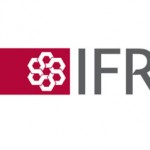New revenue guidance: Six things to consider

The release Wednesday of a long-awaited new revenue recognition standard had financial statement preparers settling in to read hundreds of pages of text, as standard-setters celebrated the achievement of producing that text.
Members of the US Financial Accounting Standards Board (FASB) and the International Accounting Standards Board (IASB) have a good sense of the most important things to consider as a result of the new standard, beyond the obvious takeaway of greater comparability across industries and jurisdictions.
Here are six things to keep in mind, as communicated by board members during interviews with the media:
1. Disclosures are a big key. Much of the value for investors in the new guidance, according to board members, will come from the additional disclosures that are required.
Disclosures around models used to estimate standalone selling prices for various performance obligations – and information on the future pipeline of revenue – will help investors, FASB Chairman Russell Golden said.
Investors also will benefit from the new disclosures on contract assets, contract liabilities, and remaining performance obligations, FASB member Marc Siegel said. “You’ll get a much more multidimensional picture about revenue recognition at a company in the footnotes than you have in the past,” Siegel said.
2. Software, telecom, and real estate will be most affected. Golden and IASB Vice Chairman Ian Mackintosh both listed software, telecommunications, and real estate among the industries that will see the most change among their constituents as a result of the new standard.
Some companies in the asset management industry also will see a significant change in US GAAP, according to Golden. Mackintosh said construction, which currently is subject to certain industry-specific rules, also will see major changes in International Financial Reporting Standards (IFRS).
From a US perspective, companies in the real estate, software, and telecommunications industries are likely to recognise revenue earlier under the new model, Golden said, while some asset managers will recognise revenue later.
3. IFRS will become more rigorous. Much has been made of how the replacement of more than 200 pieces of revenue recognition literature with one comprehensive standard will result in substantial improvement in US GAAP.
But Mackintosh said there will be significant improvements in IFRS, too, beyond simply creating more worldwide comparability.
“We actually felt that our guidance was a bit insufficient,” Mackintosh said. “… We’ve had some practices that have grown that perhaps we wouldn’t regard as ideal. We hope that this new standard, with its focus on performance obligations and when you deliver performance to your customer, will clear up some of the practices that have built up over the years.”
4. The transition resource group will provide some direction. A transition resource group, being created by FASB and the IASB, will provide some answers for preparers in interpreting the standard. But don’t look for the group to lay down prescriptive accounting guidance.
The group will field questions from preparers with the intent of directing them to answers that already can be found within the standard, Mackintosh said. Questions that are not covered by the standard will be referred by the transition resource group back to FASB and the IASB.
Meetings will be held in public and available on the internet to maximise the boards’ ability to educate the public. The boards expect the meetings to begin in July, and the members of the resource group are expected to be announced next week, according to Golden.
5. Sales of non-financial assets may be represented better. Information provided on the sales of non-financial assets to non-customers will better reflect the economics of transactions under the new guidance in US GAAP, Siegel said.
Take, for example, the sale by a manufacturer of its headquarters building and the land associated with it. Siegel said today’s guidance for that transaction, under Statement of Financial Accounting Standards No. 66 (FAS 66), requires a very prescriptive, constraining FAS 66 analysis that may not reflect the economics of a transaction.
“Under the new standard, everybody would look at that the same way, and you would recognise and measure the gain on the sale of that real estate in the same way, as this standard would require,” Siegel said. “I think that’s a significant enhancement to a very industry-specific FAS 66 that we have in place today.”
6. The transition date is firm – for now. Some preparers who plan to use the full retrospective transition method are concerned that the effective date won’t give them enough time to install systems needed to capture the information they need.
The standard will take effect for U.S. public companies for annual reporting periods beginning after December 15th 2016, including interim reporting periods. Companies using IFRS will be required to apply the standard for reporting periods beginning on or after January 1st 2017.
That means preparers who are performing full retrospective transition rather than the alternate method may want to have systems in place to capture data for dual reporting by January 1st 2015. Some are concerned that this won’t be enough time, but for now, board members seem intent on keeping the current effective date.
Golden said the boards look forward to understanding preparers’ questions, “but right now, this is the effective date that the boards have put out.”
Mackintosh agreed. “There’s always a balance between giving people plenty of time and getting something done,” Mackintosh said. “I think January 1 of 2017, I think that’s the right balance, and I don’t think we’d be looking to change the date unless something really, really major comes up.”
Author: Ken Tysiac, a CGMA Magazine senior editor.
Source: cgma




























